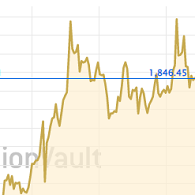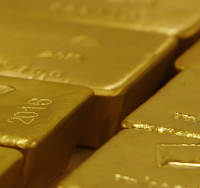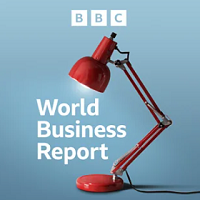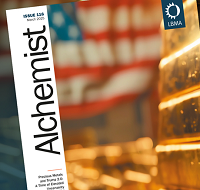Some Confirmation Bias
Plus some initial forecasts for Trump 2.0...
TRUMP ADMINISTRATION 2.0 – this time, with real tariffs – has just made landfall, says Tim Price at Price Value Partners.
The market focus (aka projectile vomiting) has primarily been on stocks, but like other commentators, we suspect the real story is taking place in the bond market.
Here is investment consultant Jeremy McKeown's take, as at 7th April 2025, via Linked-In:
"Asian markets fell high single-digit percentages overnight as trade war fears increased over the weekend.
"Safe havens include the Japanese Yen, the Swiss Franc, and gold, all relatively resilient.
"Everything else is being torched.
"Trump cheerleaders from last year, such as Bill Ackman, have condemned the Trump tariff policy, and even Scott Bessent's mentor Stan Druckenmiller spoke out against it.
"The Donald remained unphased, saying he hadn't checked his 401(k) this weekend and compared his policy to necessary medicine.
"While the headlines focus on the global traded goods sector, a more meaningful analysis might be on the capital and liquidity flows these tariff moves have set in motion.
"As Bessent has said, he is the US's biggest bond salesman, comparing his most pressing job to securing the pilot doors on US commercial aircraft before 9/11. While Ackmann and Druckenmiller have capital at risk that, like others, is being liquidated, Bessent worries about the Treasury 10-year yield and the federal debt burden.
"What is clear is that this phase will pass. However, portfolio risk adjustments are necessary.
"The narrative for the recovery is still in production; it will centre on a collapsed oil price, lower interest rates, an extension of the 2017 Trump tax cuts, some DOGE successes and massive supply-side reforms, including evidence of inward investment into the US economy.
"Of course, none of this is sure to work; otherwise, investors would be happy to hold their nerve. After all, human nature fears loss twice as much as gains; the adjustment can continue for some time.
"The new administration has achieved its objective of removing the Trump Put. It needs to collect funds into its safe-haven Treasuries before it executes a pivot back to risk.
"However, every stage of this process is fraught with danger."
In an earlier post from the weekend of April 5th/6th, Jeremy made the following comparison:
"This is America's Brexit. This is when global investors re-assess their belief in American Exceptionalism, or at least the price they are being asked to pay for it. As with Brexit, rational economic man cannot comprehend the degree to which some are prepared to take short-term pain for their longer-term ambition. In this case, the price the US administration is prepared to pay to restore manufacturing jobs to Detroit and the wider US rust belt. This is MAGA 2.0 in action and damn the torpedoes!"
We agree. The original Brexit vote marked the point at which British blue-collar workers issued a definitive vote of no confidence in the globalist experiment, complete with offshoring, a hollowing-out of traditional industry, and unwanted mass migration, known as the European Union.
Predictably, this vote was ignored by the so-called elites in London and Brussels. Trump 2.0 may prove a harder nut to crack.
Trump doesn't (personally) have to worry about re-election, so he can spend some quality time as a wrecking ball of change, and seizing the nettle of the US' unsustainable debt load. Whether by accident or design, and probably the latter, tariff chaos helps lower US sovereign borrowing costs in a year when roughly $9 trillion will mature or need to be refinanced.
We happen to think that the damage done to US sovereign creditworthiness and credibility by the Biden administration egging on the freezing of Russian foreign reserves was and is irreversible: that particular genie is not going back in the bottle.
So we remain of the view that the future involves a concentration on real assets as opposed to the illusion of fiat ones. So in turn we are more than happy to keep the faith with regard to gold, silver and sensibly priced miners, notwithstanding the elevated volatility that Trump 2.0 has injected into the markets.
Here is what the retired wealth manager Clive Thompson, again via Linked-In, expects. Irrespective of some perhaps inevitable confirmation bias, we also tend to agree:
"Tariffs! You feel you should DO something? Read this first. This is a step-by-step guide to what we can expect for stocks, bonds, the economy and gold.
1) America imposes tariffs.
2) Some foreign nations respond with retaliatory tariffs.
3) Stocks fall; recent purchases show losses.
4) Worst hit are exporters to the US, US importers, and high P/E growth stocks.
5) US sellers shift money into deposits, money-market funds, T-Bills, and T-Bonds.
6) Foreign sellers do the same with domestic equivalents (eg, gilts, OATs, Bunds).
7) Gold and silver hold gains thanks to central bank buying.
8)"Buy-the-dip" investors sell gold to buy stocks. But stock rallies are brief.
9) Nervous foreign nations reduce US Treasuries, buy more gold, undeterred by price.
10) Prices rise, wages don't. Everything costs more.
11) With limited funds, people cut spending on both US and foreign goods.
12) Global consumption drops. Economies contract. Stocks are falling.
13) Some businesses fail.
14) Many see reduced profits or slower growth.
15) Asset allocators, analyzing losses, see gold would've improved portfolio Sharpe ratios.
16) Portfolio managers begin adding gold.
17) Layoffs rise. Unemployment climbs. A global recession follows.
18) Perversely stocks are rising strongly from the bottom. Stocks are already anticipating central bank stimulus.
19) Slowing economies reduce tax revenues, partly offset by US import tariffs.
20) Governments borrow more to cover shortfalls and rising social costs.
21) Central banks blame consumer price rises on a "one-off", not underlying inflation.
22) They lower interest rates multiple times to try and boost economies. Longer term Treasury yields remain stubbornly high.
23) With fewer surplus Dollars from lower exports, foreign nations buy fewer US Treasuries.
24) Americans buy some, but only at higher yields. Treasury prices fall, yields rise.
25) Higher yields raise debt servicing costs.
26) The Fed becomes lender of last resort, prints money to buy T-Bonds − like in 2008 − 2011 and 2020–2023. Foreign central banks follow.
27) We have global QE.
28) More money boosts economies. Stocks rise. Gold soars."
In a financial world experiencing genuine chaos and wild tectonic shifts, there is the possibility that the secular bull in the monetary metals and real assets has only just begun.
We can live, quite happily, with that.













 Email us
Email us
